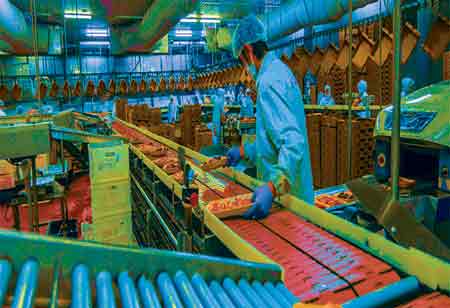THANK YOU FOR SUBSCRIBING
Be first to read the latest tech news, Industry Leader's Insights, and CIO interviews of medium and large enterprises exclusively from Food and Beverage Tech Review
Advanced Tools and Techniques for a Zero-Waste Kitchen
One's kitchen promises to combat waste, often filled with remnants and excess packaging.

By
Food and Beverages Tech Review | Monday, July 01, 2024
Stay ahead of the industry with exclusive feature stories on the top companies, expert insights and the latest news delivered straight to your inbox. Subscribe today.
A zero-waste kitchen promotes sustainability, resourcefulness, and creativity through planning, purchasing, and preserving seasonal produce, composting, and root-to-stem cooking, reducing food waste and fostering creativity.
FREMONT, CA: One's kitchen promises to combat waste, often filled with remnants and excess packaging. Embracing a zero-waste ethos in the culinary space proves both attainable and gratifying. This mindset reduces ecological footprints, promotes resourcefulness, and sparks creativity in cooking. By adopting straightforward strategies and applying accessible tools and methods, individuals can convert their kitchens into sustainable sanctuaries.
Creating a zero-waste kitchen involves conscientious practices across several key areas. To begin with, effective planning and purchasing are crucial. Implement meal planning to utilize existing ingredients, reducing spontaneous purchases and food waste. Opt for seasonal and locally sourced produce to minimize carbon footprints and support local agriculture. Embrace the use of imperfect produce, which is often more affordable and equally nutritious. Purchase bulk pantry staples like grains and spices using reusable containers to reduce packaging waste.
In terms of storage, understanding proper food storage techniques is essential for prolonging freshness. Adhere to the "First-In, First-Out" principle to prioritize older items and prevent spoilage. Use the freezer effectively by blanching vegetables before freezing and storing leftovers for future meals, thus retaining nutrients and preventing freezer burn.
To further minimize waste, adopt practices such as composting food scraps for nutrient-rich soil and utilizing every part of ingredients through "root-to-stem" cooking. Transform leftovers creatively into new dishes like frittatas from roasted vegetables or salads from cooked grains. Resourceful recipes like homemade vegetable broth and fruit-infused waters reduce reliance on store-bought alternatives and effectively utilize kitchen scraps.
Opt for sustainable swaps in everyday habits, such as replacing disposable items with reusable alternatives like dish towels and shopping bags. Choose silicone or beeswax wraps over plastic for food storage, promoting durability and reducing waste. Incorporate natural cleaning solutions using vinegar, baking soda, and lemon juice, which are practical and environmentally friendly.
A comprehensive exploration into advanced zero-waste kitchen practices reveals many tools and techniques beyond the fundamentals. While reusable containers and cloth towels remain cornerstone elements, incorporating specialized equipment can significantly enhance sustainability efforts:
A Spiralizer offers versatility by transforming vegetables like zucchini and carrots into nutritious noodles, ideal for wholesome pasta alternatives. The cores can be repurposed in various dishes such as stir-fries or stocks. Additionally, a Mandoline facilitates precision slicing vegetables for salads, vegetable chips, and decorative garnishes, maximizing edible portions and minimizing waste.
Investing in high-quality knives, including a chef's knife and paring knife, streamlines food preparation with precise cuts and reduces waste from uneven chopping. Meanwhile, cultivating an Herb Garden provides a sustainable source of fresh flavors without reliance on plastic-packaged store-bought herbs, making it a practical addition to any kitchen.
Stocking pantry essentials such as dried beans, lentils, and grains ensures a ready supply of versatile ingredients for soups, stews, and baking, promoting both shelf-stability and cost-effectiveness. Similarly, incorporating nuts and seeds adds nutritional value and texture to dishes, with leftover nuts easily transformed into nut butter or flour for alternative baking.
For those eager to repurpose leftovers creatively, consider innovative cooking techniques like turning roasted vegetables and protein scraps into hearty soups or using stale bread for bread pudding or French toast. Embracing imperfect produce reduces costs and expands culinary horizons, inspiring inventive uses in the kitchen.
Beyond culinary techniques, reducing food waste extends to broader practices such as composting kitchen scraps and supporting local farmers' markets. These actions minimize landfill contributions and foster community engagement and sustainable consumption habits. By embracing advanced zero-waste kitchen tools and techniques, individuals can significantly enhance their environmental impact while enjoying creative and flavorful culinary experiences.
I agree We use cookies on this website to enhance your user experience. By clicking any link on this page you are giving your consent for us to set cookies. More info







